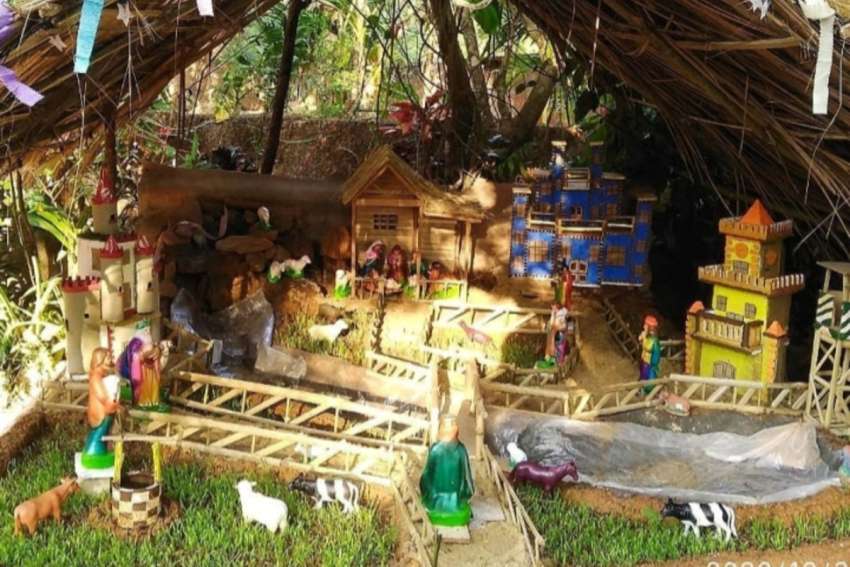The Nasrani Christmas traditionally does not involve the exchange of gifts. Attending the midnight Mass, spending time with family and a sumptuous meal to bring it all together is the usual Christmas fare.
However, the festivities start well in advance. The Saint Thomas Christians (Nasranis) of Kerala are one of oldest Catholic communities in India. Preparations for Christmas begin almost a month in advance with a 25-day fast that ends on Christmas Eve. This period almost coincides with the beginning of the liturgical year and the first season of the liturgical year, which is known as Subbara, or “Weeks of Annunciation.”
The dawn of Advent is often marked by the rush to build a pulkoodu (Nativity scene). Though not as intricate as the modern “Christmas Villages,” these quaint little recreations, which look like miniature cattle-sheds, are a matter of pride for Catholic households.
The children are often tasked with constructing a pulkoodu. They collect the twigs and hay to build the manger. Twigs and tiny stones form the walls of the manger, with a splash of wet mud to make it sturdy. Hay is then placed on top to complete the modest recreation of Jesus’ birthplace.
Once the manger is built, clay figurines of the Holy Family, the shepherds and cattle are placed inside. According to local tradition, the figurine of Baby Jesus is only placed after midnight Mass.
A cardboard star illuminated by a light bulb is yet another tradition quintessential to the Christians of the area. These stars, representing the star that guided the Magi, is a common sight in Kerala.
Western influence over the past few years has seen an influx of the “pine” style Christmas trees in many households. However, many traditional households still resort to decorating local trees, like the jackfruit or guava, which grow plentifully in their front yards.
The holy Qurbana (Mass) at midnight is the pinnacle of the Christmas festivities in Kerala. This Mass in an ancient Syriac Catholic rite and is a long affair at almost four hours. A rather unique practice in the Christmas Qurbana is the lighting of the fire, or Theeyuzhalicha. This is usually done outside the main entrance of the church and is a symbol of the fire that kept baby Jesus warm.
After Mass, a figurine of baby Jesus is brought to the church’s manger amid much fanfare, with the aroma of burning frankincense leading the way.
Though not as common in the Nasrani churches, the Latin churches in Kerala often have a Chavittu Nadakam performance after Mass. Chavittu Nadakam is an ancient tradition of operatic theatre practised by the Christians of Kerala. The word chavittu denotes steps while natakam is drama. This artform involves the majestic stomping of feet in a soldierly march to the accompaniment of percussion instruments and cymbals while enacting a biblical story through song.
As tiny slivers of snow invite me into my very first White Christmas, I can’t help but wonder if it would be the same without these traditions that I grew up with. What would I miss more this Christmas? Would it be my parish, the Qurbana, the midnight escapades after Mass with friends? My mother’s Christmas lunch? Building a pulkoodu with my brother? I guess I’ll have to wait and find out.
I know this Christmas will be a lot different from all my previous ones. But I know I will find solace in the central facet of Christmas that forever remains constant… Jesus Christ.
With my sibling and me at different corners of the globe, our house remains empty this Christmas. And as my mother builds her pulkoodu this year, maybe, I’ll ask her to add a few straws of hay for me.
(Joshua Ben Joseph is a journalism student at Toronto Metropolitan University spending his first Christmas in Canada.)


